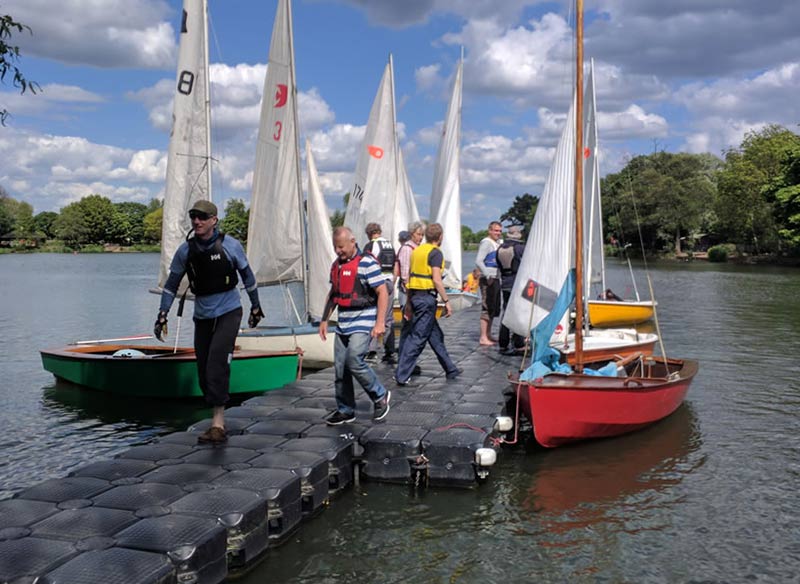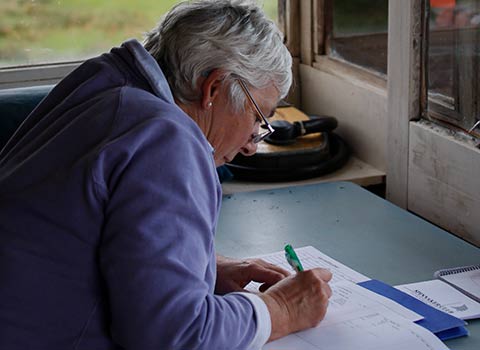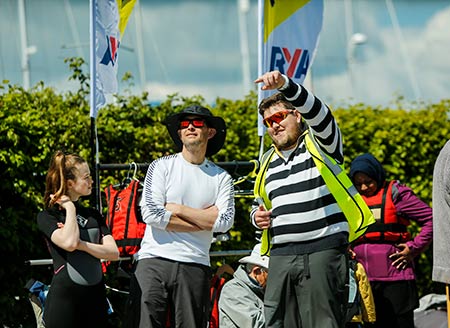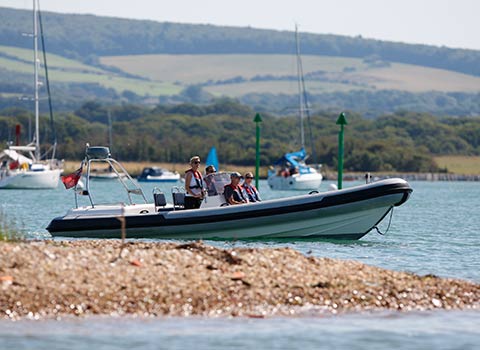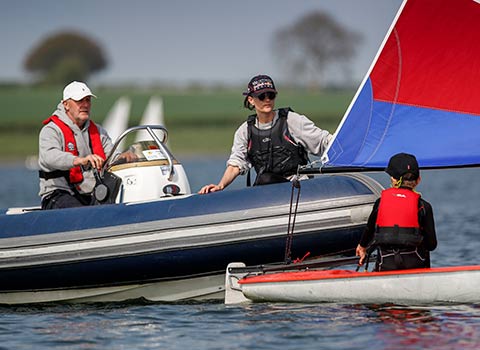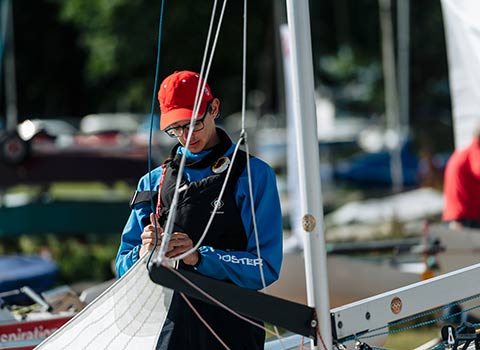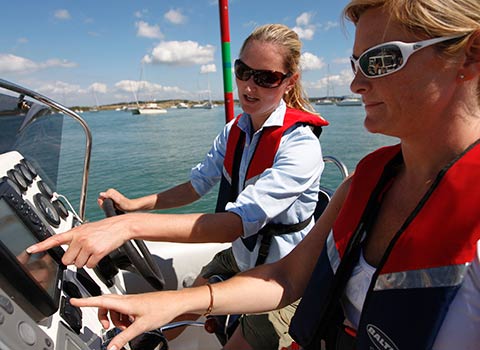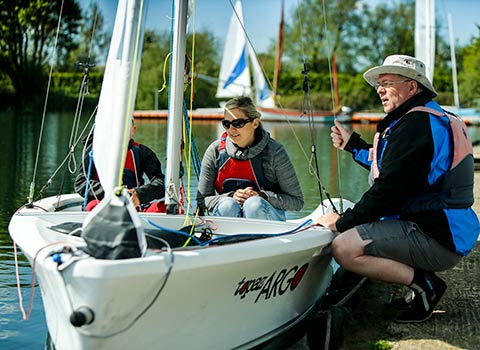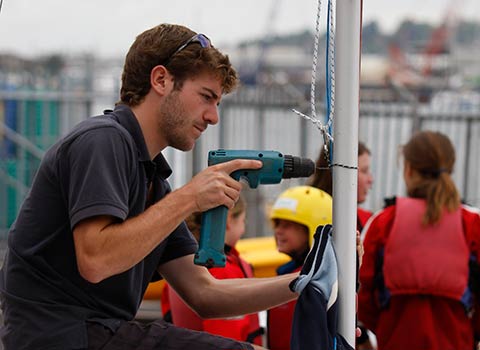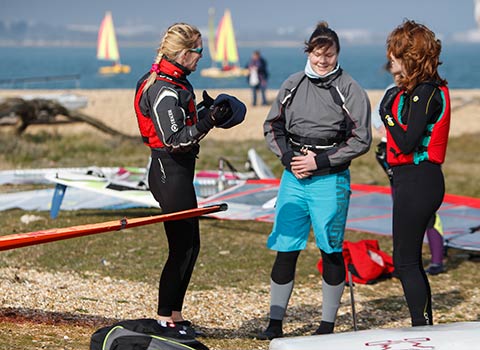Controls and procedures detailed
Putting controls to mitigate risk into practice
A risk assessment identifies the controls needed to manage risk to people arising from hazards. The controls are then detailed further into policies, procedures to be followed, and tools to implement the procedures.
For example, in a racing context, a risk assessment might identify the need for competitors to wear personal flotation devices at all times.
This 'control' will be detailed in Class Rules, Racing Rules, and / or the Sailing Instructions.
Operating procedures
An important part of any safety system is people knowing what to do and how to do it. Operating procedures are a way of setting out what people should do – the steps they should follow. (The how to do it comes with the competence people have and the tools, equipment and training you give people).
Operating procedures are part of the safety system, and a number of different topics included within this resource can form part of your procedures, such as an overview of your organisation, your safety on the water policy and key roles and responsibilities.
As with any documentation that forms part of a safety management system, operating procedures need to be shared and used. It is worth recording who has read the procedures and when.
There are several ways of structuring procedures
The following are possible headings
1. Overview
- The organisation
- Safety policy – statement of intent
- Roles and responsibilities
- Risk Assessment
2. Pre-session
- Resources and people needed
- A safety plan
3. Operating areas
- Map
- Local hazards and by-laws
- Emergency access and evacuation points
4. Participants
- Identifying needs
- Booking / registering
- Joining instructions
- Risk statements and choosing to take part
5. Manual handling
6. Roles (on the water delivery)
- Competency and training required
- Crewing levels
- Equipment and clothing required (personal or provided)
7. Vessels and equipment
- Checklists
- Rigging and set up, use, and launching and recovery guides
- Competency and training required to rig / use / launch and recover
- Owners / operating manuals
- Repair and maintenance schedules
- Breakages / fault identification
8. Daily risk assessment / decision making
9. Incidents
- First aid
- Head injury
- Recording accidents, incidents and near misses
- Dealing with a major incident
- Emergency Action Plan Flow Chart
10. Communication
- Briefings - participants and safety crew
- On the water
11. How to manage
- Accounting for participants and staff / volunteers
- Launching and recovery
- Getting to and from the sailing area
- Boats and people returning to the shore
- Person in the water
- Entrapment
- Injury
- Other water users
- Gear failure
- Deteriorating conditions: fog / poor visibility; strong winds
- Person unaccounted for
12. Post-session
- Raising concerns
- Debriefs
13. Appendices
Questions to ask - Operating procedures
- Know what to do?
- Follow the process?
- Suggest improvements?
Find out more about RYA Guide to writing operating procedures.
A safety plan
Every session should have a safety plan. Much of the plan will come from the operating procedures and the steps you take to brief participants, staff and volunteers. A safety plan should mean that those responsible for safety on the water know the steps to be followed for:
- Getting to and from the sailing area, including towing arrangements
- Safety fleet positioning, numbering / call signs and specified roles
- Safety equipment required by safety fleet and competitors / participants
- Boats returning to shore while session is continuing
- Abandoning boats
- Briefing schedule
- Emergency action plan
- Communication methods to be used and channels allocated
- Any tallying requirements or other systems to account for who is on the water
- Medical or first aid cover for both on the water and on the shore
- Guidelines for deteriorating conditions, including loss of visibility
- Participant / competitor list and any specific individual needs
- Emergency drop off points
- Daily risk and dynamic risk assessments.
Questions to ask - A safety plan
Find out more about health and safety advice.
Insurance
Risk management is about reducing risk as far as is possible, not eliminating it. It is not possible to mitigate against every scenario. So insurance is an important control to have in place.
Every organisation will have different insurance needs, so please seek expert advice.
It is important that you have an insurance policy(s)
- That is up to date
- Provides an appropriate level of indemnity and covers the organisation against potential liabilities arising from the activities
- Covers any personal liability of staff or volunteers while acting on behalf of the organisation
- Covers damage and third party liability for any craft or equipment you own is insured for damage and third-party liability
It is always worth offering assurance to everyone involved by displaying your insurance certificate.
Questions to ask - Insurance
Find out more about RYA club insurance
Recording accidents, incidents and near misses
Any safety management system should have a mechanism for recording accidents and near misses. An accident book is a very useful tool for doing this. Accident books should be reviewed regularly, and action identified to prevent similar accidents from happening again.
The information recorded is an indication of how well safety is being managed and allows others to learn
Accident reporting may well collect personal data, so is subject to GDPR requirements. A variety of accident books are available to purchase, including from HSE.
Near misses are events that could have caused an accident or injury, and it is useful to keep a record of these. The record can be similar in content to an accident book entry. Review, and action from the lessons learned are equally important.
If you are delivering activity for children or people who do not have capacity your procedures should include steps to inform parents, guardians or carers.
Clubs or associations that own, control or occupy land have a range of obligations to guard against visitors being injured. Organisations that are employers will have legal responsibilities to record accidents and injuries and report accidents that cause deaths, reportable injuries and dangerous occurrences (near misses).
The RYA recognises that sharing information about accidents is invaluable for learning and influencing safe behaviour. So the RYA has established a number of triggers for reporting – if you have an accident or incident at your organisation that involves a fatality, hospitalisation, reporting the MAIB, if useful lessons can be learned, or you are in doubt whether you should report, then do contact us using the reporting form.
Questions to ask - Recording accidents, incidents and near misses
Find out more about RYA accident and incident reporting
Agreeing risk assessment and procedures with partner organisations
Affiliated organisations potentially have numerous partners
- Schools, or community organisations getting on the water with you
- Sailing clubs that you are part of
- Sailing clubs that you have close links with
- Activity centres who use the same sailing area
All partner organisations will want assurances that you are safe on the water, so a mutual understanding of what you do and how you do it is important.
This could take the form of
- Sharing key documents
- Explaining safety procedures
- Discussing each organisations’ risk assessments and any differences within
- Consulting on procedures
- Recognising each other’s procedures
Questions to ask - Agreeing risk assessment and procedures with partner organisations

